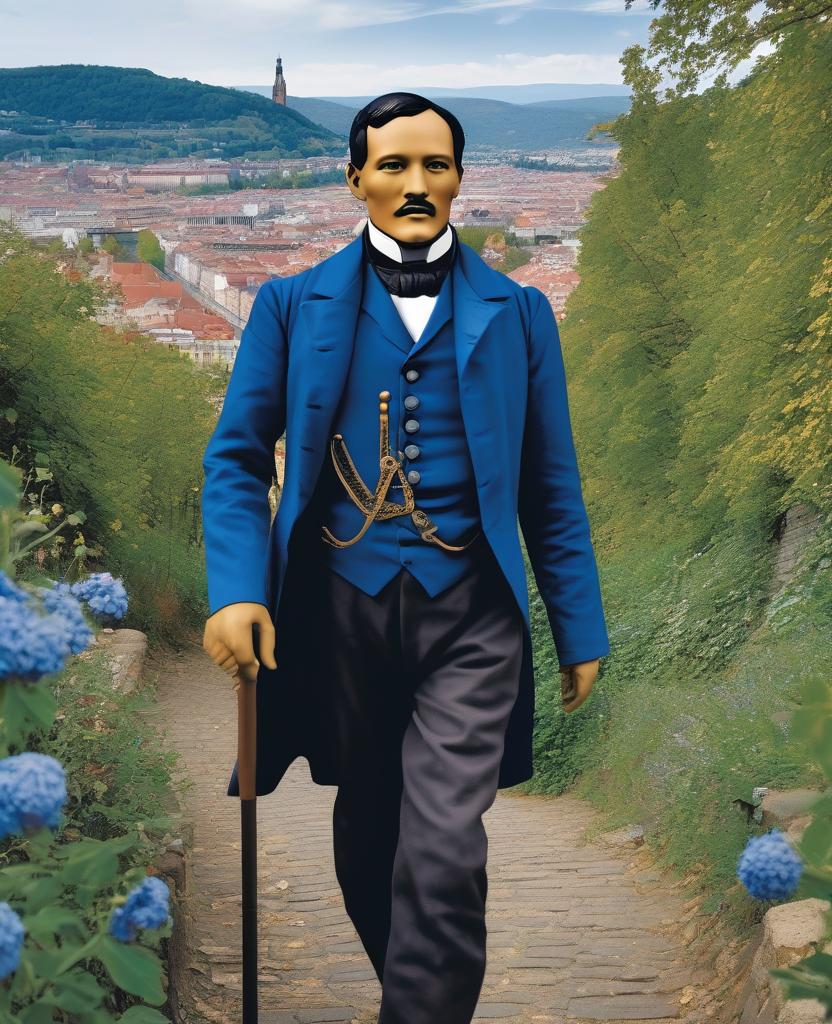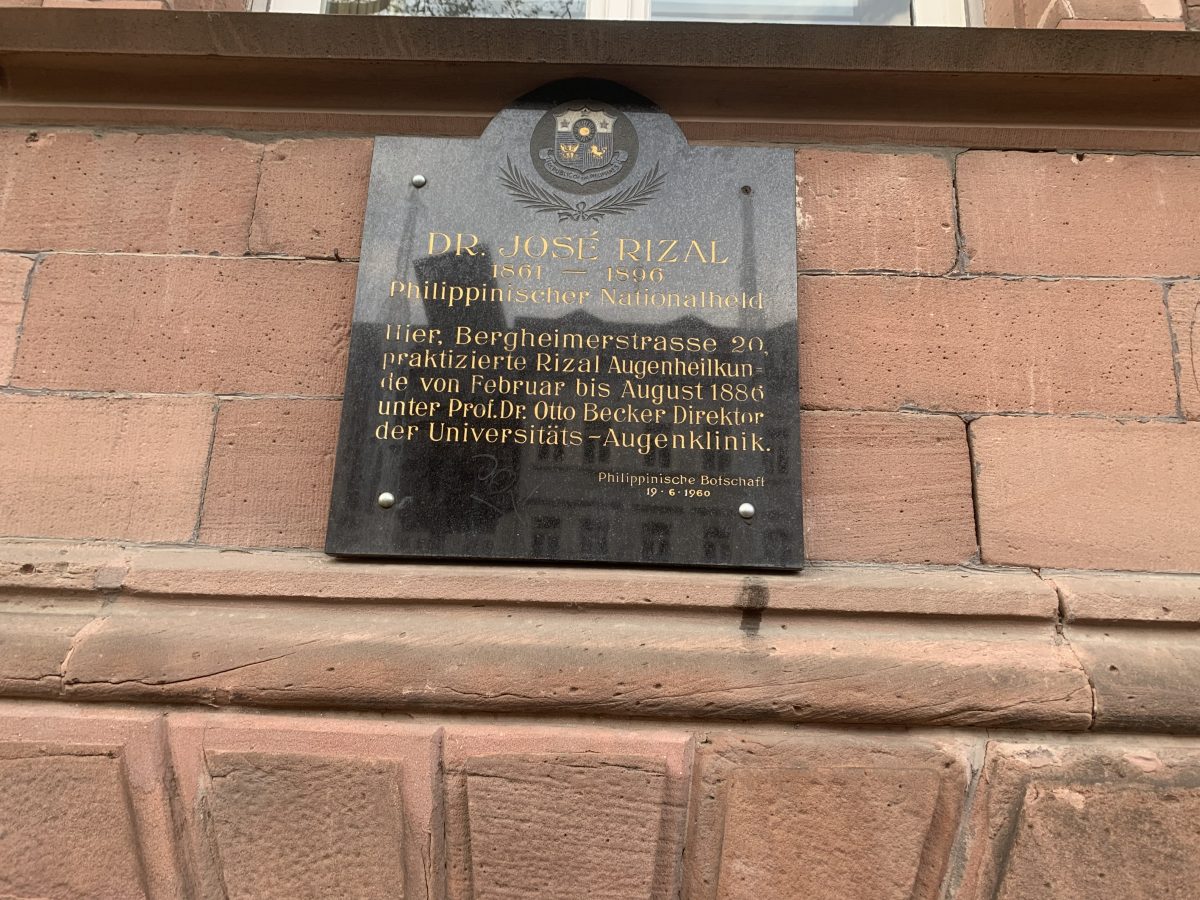A las Flores de Heidelberg

“Id a mi patria, id, extranjeras flores,
sembradas del viajero en el camino,
y bajo su azul cielo,
que guarda mis amores,
contad del peregrino
la fe que alienta por su patrio suelo!”
Thus begins Jose Rizal’s poignant poem to the flowers of Heidelberg, marking the commencement of a narrative deeply embedded in love and longing for his homeland. Despite his brief stay of only six months in Heidelberg, it is arguably the town that left the deepest imprint on his heart throughout his travels. Journeying along the Philosopher’s Way from the Neckar river, Rizal found himself ensconced in an environment that undoubtedly fueled his creativity and intellectual pursuits.
(…)
“Decid que cuando el alba,
que roba vuestro aroma,
cantos de amor jugando os susurraba,
el tambien murmuraba
cantos de amor en su natal idioma;
que cuando el sol la cumbre
del Koenigsthul en la manana dora
y con su tibia lumbre
anima el valle, el bosque y la espesura,
saluda a ese sol aun en su aurora,
al que en su patria en el cenit fulgura !
y contad aquel dia
cuando os cogia al borde del sendero,
entre ruinas del feudal castillo,
orilla al Neckar, o a la selva umbria”
Following this, the poet vividly describes how the dawn, with its theft of fragrance and whispering songs of love, mirrors his own expressions of affection in his native tongue. Similarly, as the sun adorns the Koenigsthul’s summit in the morning, its warm light animating the valley, Rizal salutes this celestial body, reminiscing about the sun that shines back in his native land. He reminisces about the day he picked the flowers along the path, amidst the ruins of a feudal castle, alongside the Neckar or within the shadowed forest, invoking a deep sense of nostalgia and connection to his origins.
Philosphenweg – The Philosopher’s way
From the hill across the old town of Heidelberg, the view has barely changed a century after Rizal’s Heidelberg. The castle ruins, the old funicular that makes its way through the verdant forest atop Koenigsthul mount, and Karl-Theodor Bridge, rebuilt in time, have inspired countless authors across time.
During his stay in 1886, he devoted himself to an apprenticeship with Professor Otto Becker, an esteemed ophthalmologist, as he was determined to help cure his mother’s worsening cataracts. Heidelberg kept him on tract for this Mission.
Jose Rizal’s continuing “Bildung”
Moreover, Heidelberg was where Rizal continued his “Bildung,” or the cultivation of personal and cultural development through education and self-reflection. This concept deeply resonated with him, underpinning his belief in the transformative power of education and cultural enlightenment for the liberation and progress of the Filipino people. This period marked the beginning of his insightful correspondences in German with Ferdinand Blumentritt, which spanned until his untimely death in 1896. Their exchanges, covering a vast array of subjects from Philippine history to politics, fortified a friendship that profoundly influenced Rizal’s development as a nationalist and reformer.
To the Flowers of Heidelberg
Lastly, Rizal’s poem to the flowers of Heidelberg embodies a dichotomy of hope and despair. Written during a time of personal strife and intellectual endeavor, his correspondence with Blumentritt captured the essence of his experiences—fluctuating between joy and sorrow. The sight of Heidelberg’s flowers stirred within him memories of his homeland and the trials faced by his countrymen. While they symbolized hope, they also echoed the transient nature of life and the despair that sometimes accompanies it. Despite these challenges, Rizal’s unwavering commitment to his mother and his country’s cause remained, with Heidelberg playing a crucial role in shaping his perspectives.


Thanks for sharing your perspectives on Rizal’s life in Heidelberg and how this place was part of his journey. In my opinion, the scenery may have brought poetry and life to his mission. Having seen Heidelberg in both sun and rain, and having seeing the kinds of flowers our national hero might have referenced in his poem, framed by the beauty of a historic town on a hill, I could not help but feel the urge to write something myself… nothing at the caliber of Rizal but something that is hopefully just as genuine.